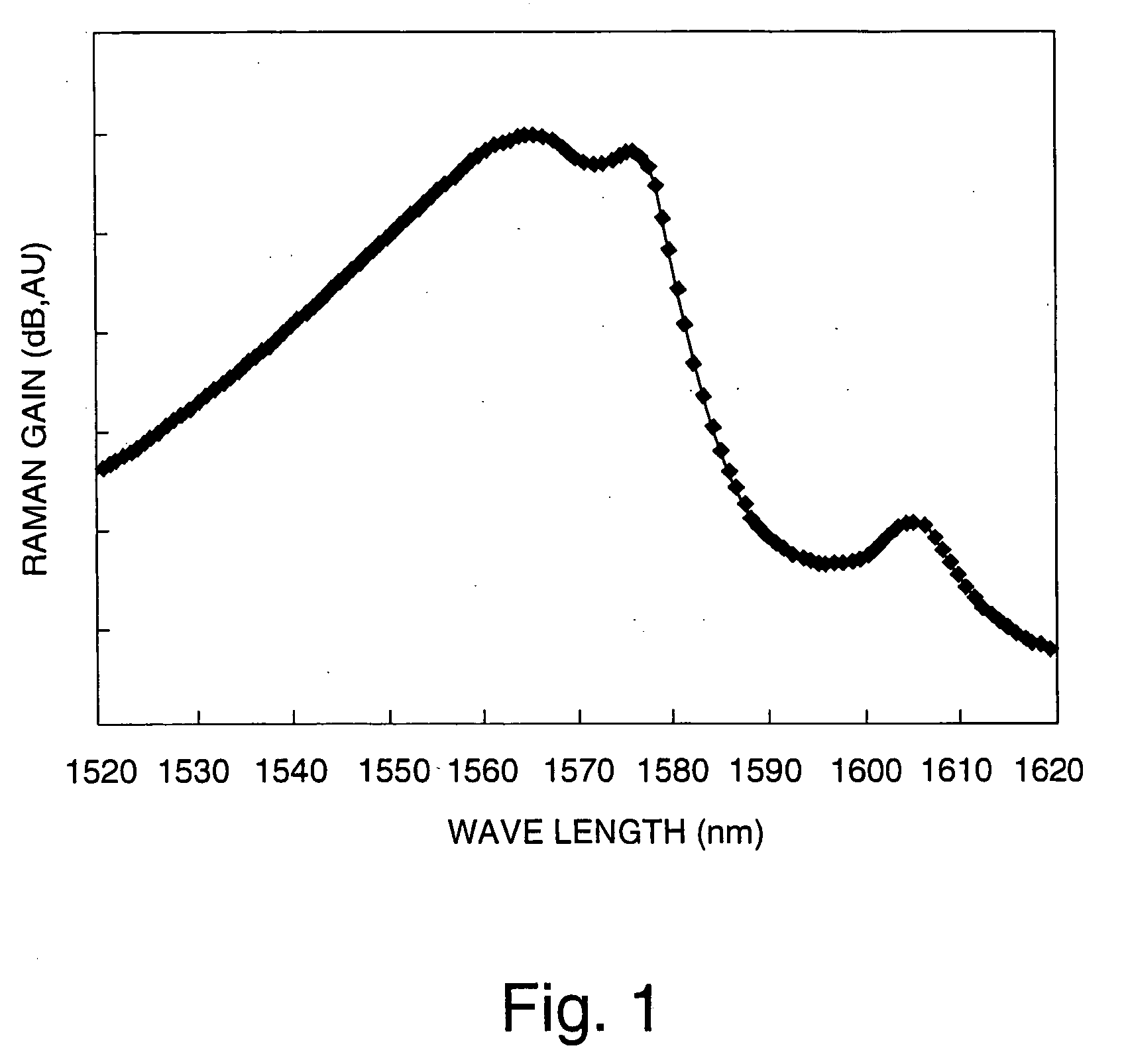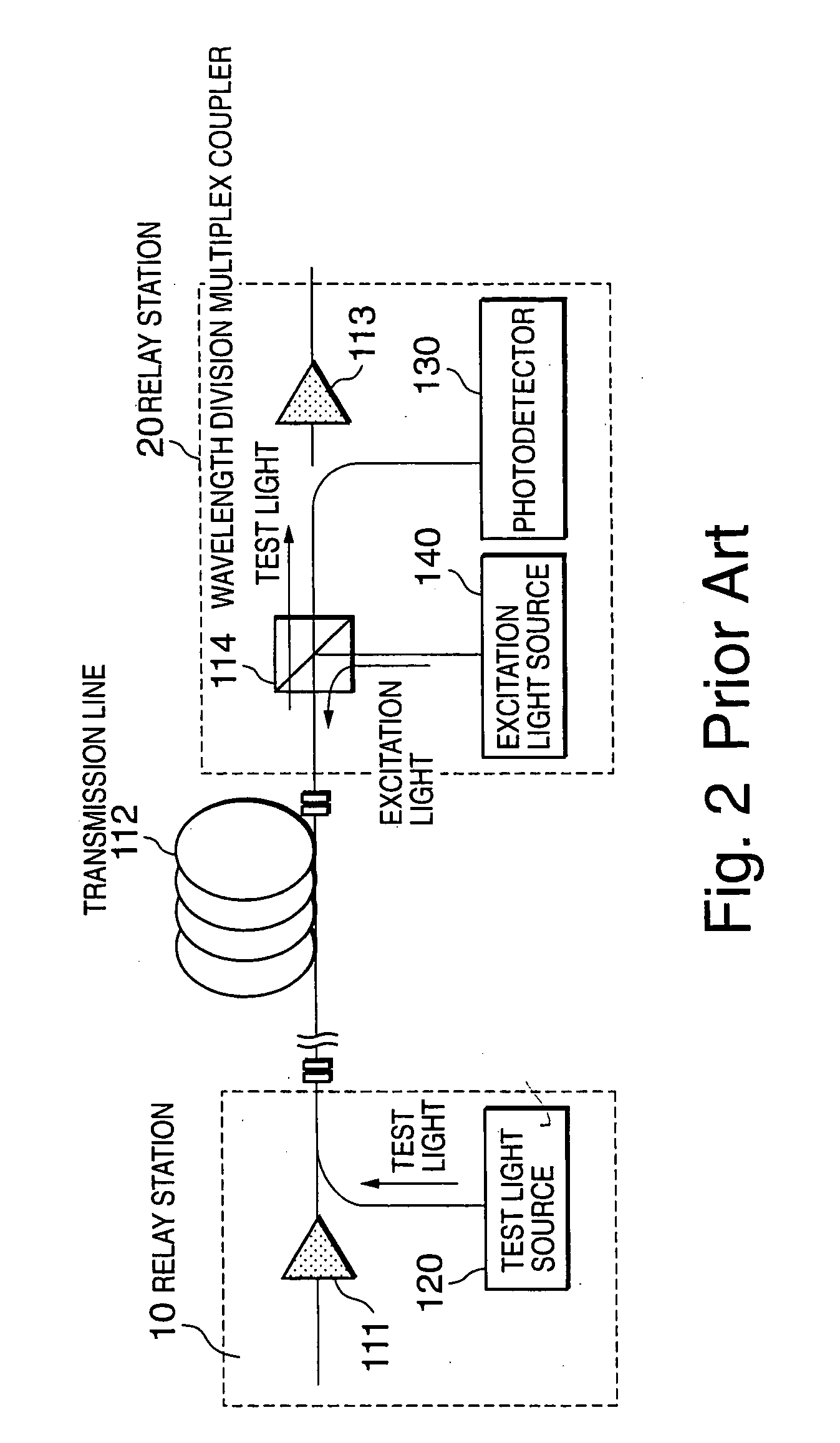Method and apparatus for measuring Raman gain, method and apparatus for controlling Raman gain, and Raman amplifier
a technology of raman gain and amplifier, which is applied in the direction of instruments, optical apparatus testing, structural/machine measurement, etc., can solve the problems of inability to flexiblely set a measurement interval, inability to measure, and inability to measure,
- Summary
- Abstract
- Description
- Claims
- Application Information
AI Technical Summary
Problems solved by technology
Method used
Image
Examples
first embodiment
[0038] FIG. 3 is a constitutional view showing a constitution of the present invention. In the constitution of FIG. 3, a WDM coupler 114 for multiplexing / demultiplexing an excitation light wavelength and a test light wavelength is connected to one end of a transmission line. An excitation light source 140 is provided in an excitation light wavelength port of the WDM coupler 114; and a wavelength filter 116, an optical attenuator 115 and an OTDR device 110 are serially connected in this order to a test light wavelength port thereof. In FIG. 3, a Raman gain is measured by use of the wavelength filter 116, the optical attenuator 115, the OTDR device 110 and the WDM coupler 114.
[0039] In the embodiment, measurement of a Raman gain efficiency is conducted by use of the optical time-domain reflectometry (OTDR) device 110.
[0040] OTDR is a technique for measuring distributed losses in an optical fiber transmission line by making pulsed light incident from one end of the optical fiber transm...
second embodiment
[0052] Next, description will be made for a second embodiment of the present invention. In the foregoing first embodiment, the Raman gain efficiency is obtained by use of the propagation loss detected from the return light generated in short of the vicinity of B end of the transmission line. However, there is a case, as shown in FIG. 7, where B end cannot be detected due to noise in a transmission line having a large loss in a test light wavelength. In such a case, a gain efficiency can be obtained based on return light generated at a point (B' point of FIG. 7) which is not buried in the noise. However, a significant attenuation of an excitation light power at B' point leads to generation of no Raman gain. In other words, OTDR graphs in a state of stopping an excitation light output and in a state of outputting the excitation light are required to be parallel to each other. When the OTDR graphs in the state of stopping the excitation light output and in the state of outputting the e...
third embodiment
[0054] Description will be made for a third embodiment of the present invention. The first embodiment showed the Raman gain efficiency in the case where the test light is lower in frequency than the excitation light by 13 THz. However, not being limited to the above, a Raman gain efficiency can be measured regarding other wavelength intervals. For example, in the same SMF as that of the first embodiment, when a test light wavelength of 1550.0 nm and an excitation light wavelength of 1463.8 nm are used and an excitation light output power is set to 166 mW, a Raman gain of 4.6 dB and a Raman gain efficiency of 27.7 dB / W are obtained. FIG. 8 shows a relation among the excitation light wavelength, the test light wavelength and a Raman gain profile in the embodiment.
PUM
 Login to View More
Login to View More Abstract
Description
Claims
Application Information
 Login to View More
Login to View More - R&D
- Intellectual Property
- Life Sciences
- Materials
- Tech Scout
- Unparalleled Data Quality
- Higher Quality Content
- 60% Fewer Hallucinations
Browse by: Latest US Patents, China's latest patents, Technical Efficacy Thesaurus, Application Domain, Technology Topic, Popular Technical Reports.
© 2025 PatSnap. All rights reserved.Legal|Privacy policy|Modern Slavery Act Transparency Statement|Sitemap|About US| Contact US: help@patsnap.com



